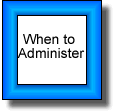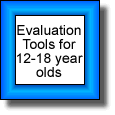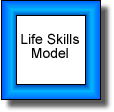 |
|||||||||
 |
|||||||||
 |
|||||||||
 |
|||||||||
 |
|||||||||
Goal – Setting: Teaching Resources
STEAM: Writing Goal Statements
Learning Objective: To illustrate the need for writing and taking action towards achieving set goals.
Procedure:
STEAM represents five basic procedures.
- S= Specific. It is important that all goal statements are concise and specific. T= Time Determined. It is also important that goals have an appropriately timed duration. The goal should not drag on without any challenge of its completion. However, it should also not be frustratingly short on time either. E= Ensure Success. While it is valuable to set goals that challenge your abilities. It is also valuable to ensure success. Goals must be realistic and achievable so that your time and energy are well spent. A= Action-Oriented. You must be willing to take action when you write a goal statement. It is impossible to accomplish a goal without taking action.
- M= Measurable. A goal statement must be measurable. If a goal can not be evaluated, then it is impossible to know you have reached success.
The results of this method can best be illustrated with an example.
S= I will raise my grade in math from a C to a B+.T= I will follow this plan through the remainder of the grading period.E= I have the energy and I am willing to put forth the effort necessary to accomplish this goal. It is within my ability to achieve this goal. My success is ensured with determination.A= I will reach this goal by studying for two hours a day on new material and a half hour a day on problems in recent units that I struggled through. Any problems that I can not work out on my own, I will ask someone for assistance.M= I will know that I accomplished my goal when I receive my report card with a B+ on it.
The components of achieving goals are as follows.
Adapted from: Fritz, S.M., Brown, F.W., Lunde, J.P., Banset, E.A. (Eds.). (1996). Interpersonal Skills For Leadership. Massachusetts: Simon and Schuster Custom Publishing.
